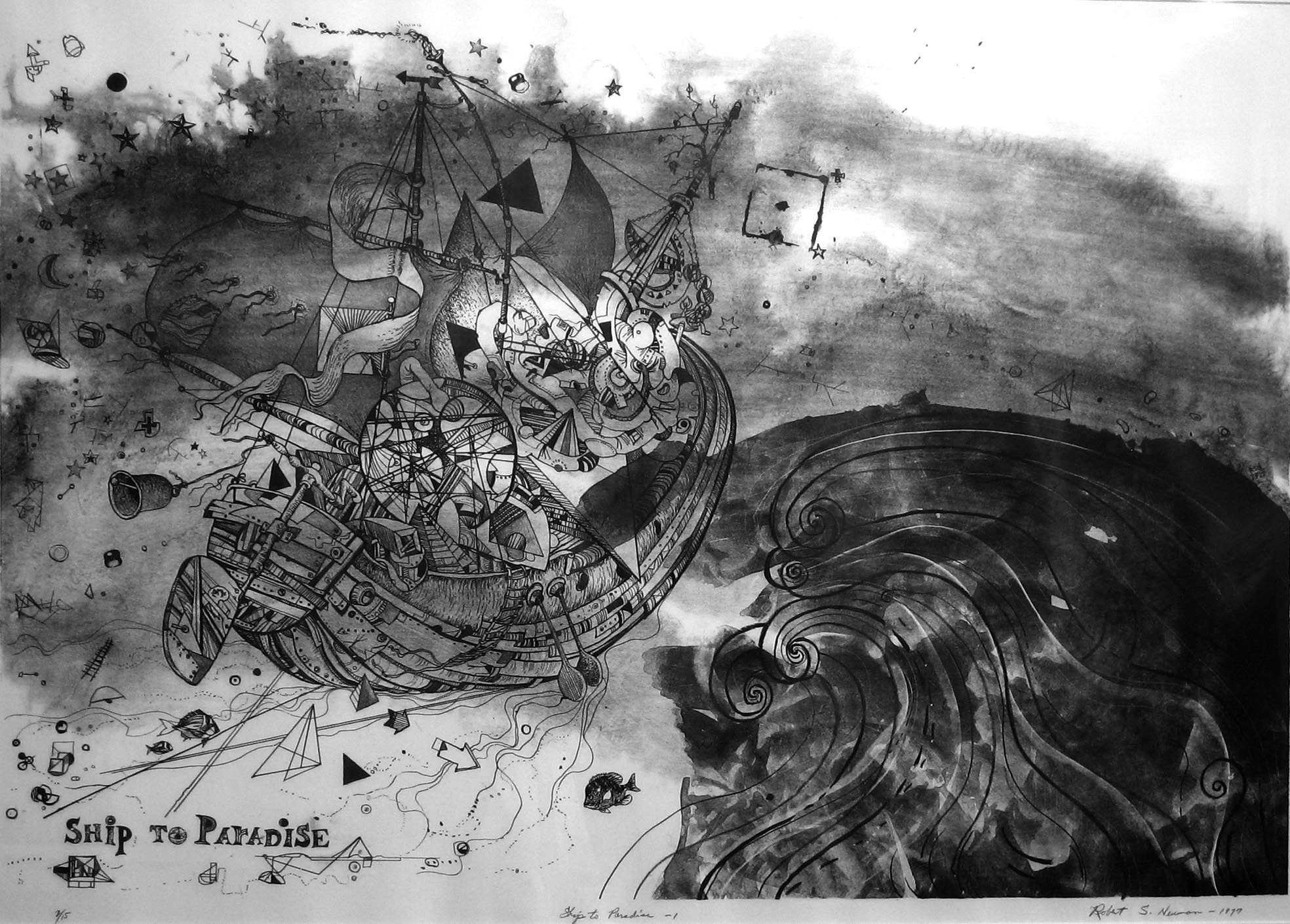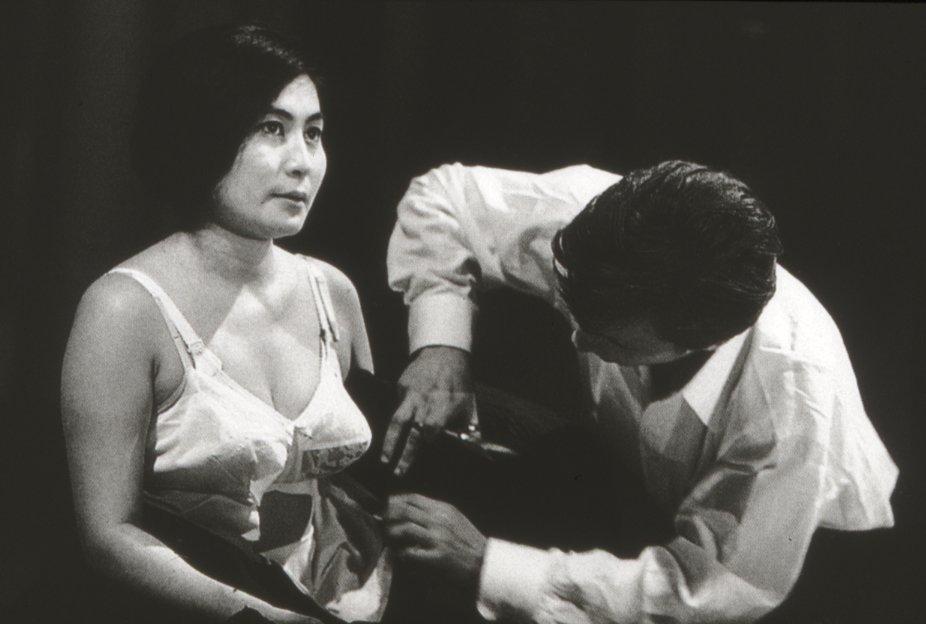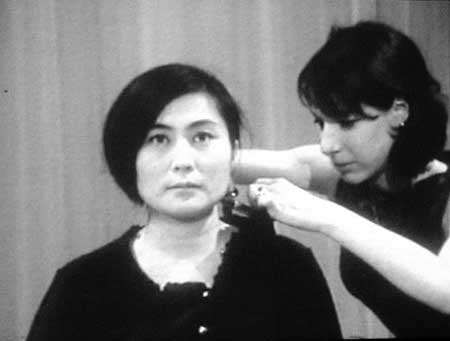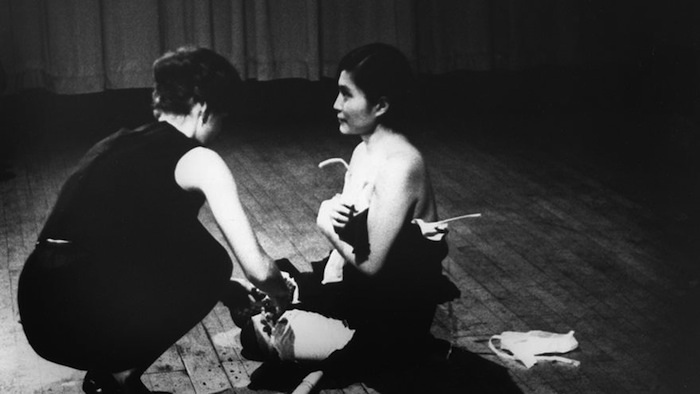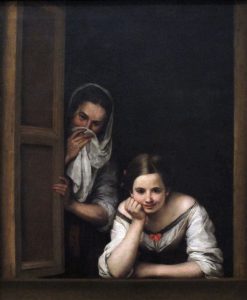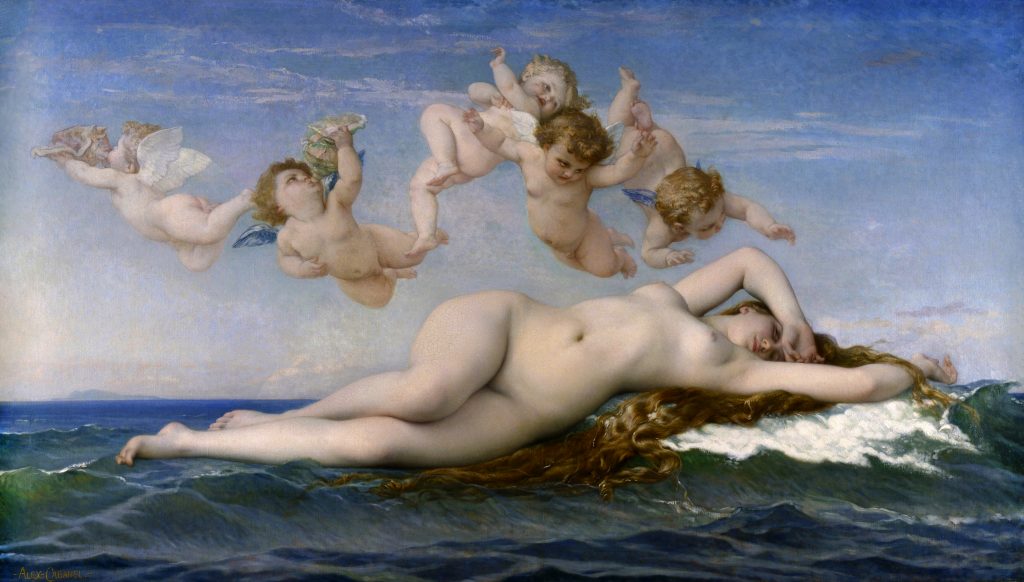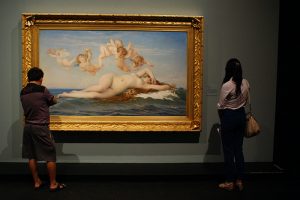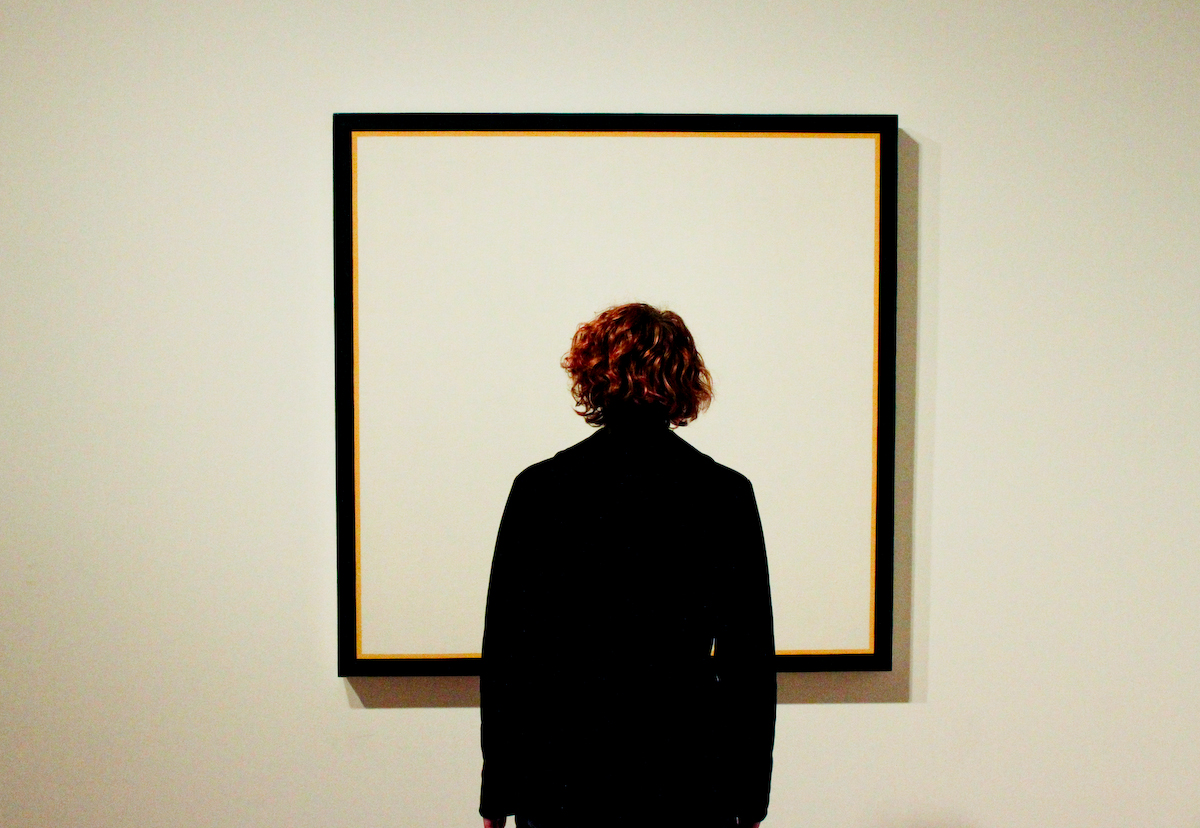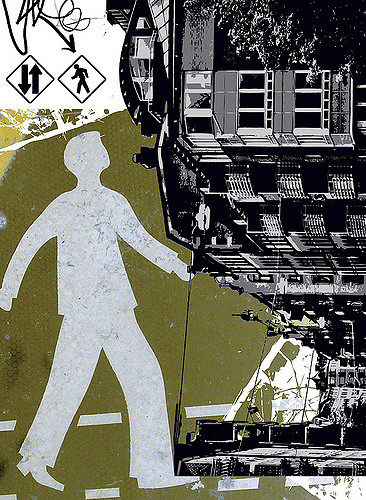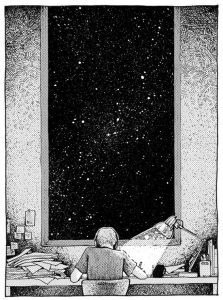There is no longer a demarcation between gamer and game.
There is no controller you hold in your hand, there is no keyboard and mouse at the mercy of your finger tips; there is no screen, no pixellated window you look through into the “game”.
markiplier [Youtube user], “STORE CLERK BLUES | Job Simulator – VIVE” Youtube video, 22:00, posted on April 25, 2016, https://www.youtube.com/watch?v=lwvnT3AQcRM
With Oculus Rift, the gamer and the game are amalgamated, similarly to how the subject matter – the art/artist itself – is no longer separate from the viewer in the form of a canvas on a wall or a statue on a pedestal, but shares the same space as the viewer (see the Yoko Ono’s Cut Piece Post). With Oculus Rift, the game is no longer displayed virtually on a screen, but in the viewer’s space; The game itself is brought into and exists in the gamer’s world, the gamer’s reality. The game itself transcends boundaries of where and how it takes place. It is no longer in the digital sphere, but right in the gamer’s living room. Talk about utterly dismantling categories and distinctions.
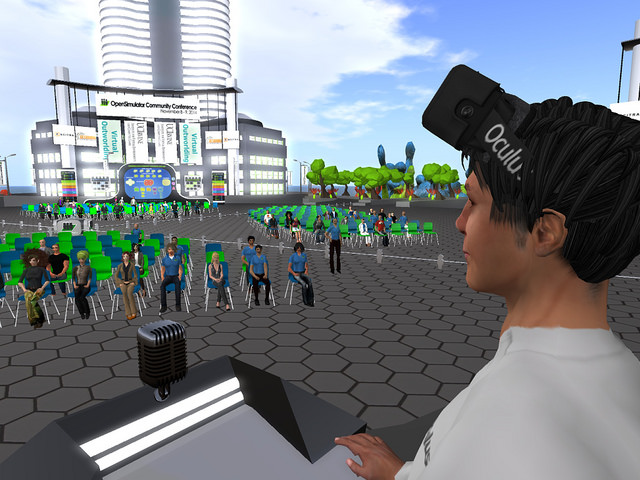
Virtual reality has been brought over from its complicated existence in the digital sphere, and is now very much in our space. The fascinating thing with Oculus Rift is that its premise is totally reliant on human eyes: you essentially wear glasses, and these glasses present you a whole new reality. You put on the glasses, you look through the lens, and automatically you are transported to an entirely different world, while still staying in your living room, but what’s more is that your living room is the setting for the game.
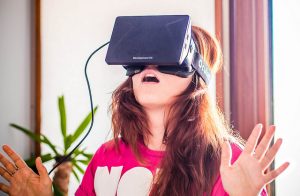
You are in your living room and in the game at the same time: alternate reality is no longer so alternate, it exists together with “real reality”. The game alters and manipulates the space you are in. The living room is still there, but you as the gamer are being transported to a whole other place while still in your living room. But you can’t see your living room, as soon as you put on the headset, you exist in an entirely different world. Both the living room you are playing in and the game you are playing exist, but the gamer easily moves through these two spheres, as the fragmented line which separates them is porous.We can walk into a different reality by putting on glasses. The glasses show us what we are looking at, and as soon as we take off the glasses, we are immediately transported back into our living room. Oculus Rift really emphasizes the use of sight as an empirical sense receptor. It places heavy import on the use of the human eyes as a way of making us believe we are actually in an alternative dimension. What about those who are blind then? But by putting on the headset, the gamer in a way, is blinding themselves from the real world. Those in the actual real world who are blind, are not allowed the opportunity to delve into alternative realities.
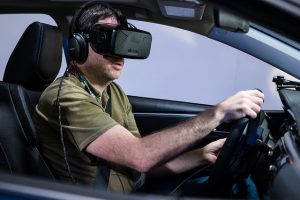
But this raises the question: what is the actual real world? If a fake world is being brought into the dimension of the real world, how do we distinguish between the two? Will there come a time when we can’t, when the two become inseparable to the point where we all just have Oculus Rift headsets on, and see and look and view the way the Oculus Rift wants us to? Glasses can be tinted, their glass or plastic can get distorted or bent out of shape, altering our entire perception of reality? What about digital glasses? It’s scary to think that technocratic powers may allow these headsets to be easily subject to manipulation and distortion on a mass scale, altering humanity’s perception of reality itself, altogether.
Watch Wired’s review of OC and its relation to VR, and see what you think.
WIRED, “Oculus Rift: The Age of VR Has Begun”, video via WIRED posted 28 Mar. 2016. Web. Mar 2017. <https://www.wried.com/2016/03/oculus-rift-review-virtual-reality/>
A couple fascinating points Wired’s review touches on:
- You can buy alternative realities. You can purchase reality itself. Isn’t that the weirdest concept you can possibly wrap your mind around? But these certainly are expensive realities, and therefore esoteric. Not everyone can afford to experience VR. Hmmmmmm. Perhaps a little of the technocratic paradigm at work here? Who knows.
- “It’s not like you don’t know you’re looking at a screen, but all that visual stuff is just one small element in a whole constellation of technologies that works together to enable presence. That phenomenon when your brain actually reacts to a virtual experience as though you’re really there”. So what about those who are blind? How are they able to experience alternative reality, this new future of technological advancement, if the technology used to transport us there can only be done through sight? What does this say about sight and the human eyes? Are they implying that all our knowledge, or experience is founded in our sight?
- The advanced technology is used with the sole objective of making your experience as real as possible. Technology is capable of turning representation into reality. While ontological philosophers and their theories are solely focused on the discernment between reality and appearance, focused on finding the line between what is real and what are the shadows projected on the wall of the cave, Oculus Rift does something radical: It’s whole premise is to not discern what is real and what is mere appearance, but rather, it fuses them so that they are not two individual things to be separated. Reality and appearance are mushed together, they are indivisible, and there’s no need to distinguish between what is true and what are the shadows, for reality and appearance are one in the same thing. You put on the head set, you step into another world, you take off the headset, you’re back in your living room. The line between the two has never been so fluid and porous. What does this say about the concept of reality?
- “If you lean forward in the real world, you lean forward in VR as well” What is VR? The catchy abbreviation for virtual reality. Whatever happens in the “real world” happens in the virtual one, so that the gamer is being stretched across both spheres, and exists in both worlds. Now the phrase “Can’t be in two places at once” no longer applies.
- “You may want to run out and join the VR revolution. This is not a fad, I repeat this is not a fad. This is a very real first step into the future”. The term revolution is certainly a loaded word. Also what’s humorous is the use of the word “real”. What marks real and unreal then if Oculus Rift is real, is a real step, a real advancement, what then is an unreal one?
to be continued

